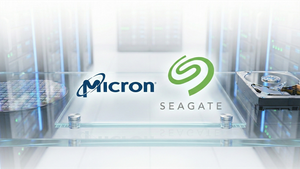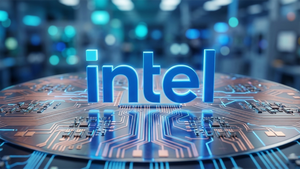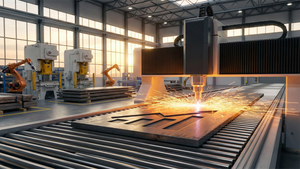
The third quarter of 2025 has etched itself into financial history, witnessing the U.S. stock market surge to unprecedented heights. The benchmark S&P 500 (SPX) decisively crossed the 6,500 threshold, ultimately closing above 6,600 points, while the Dow Jones Industrial Average (DJI) powered past 46,000. This remarkable rally signals robust investor confidence and a bullish outlook, driven by a powerful confluence of factors that have redefined market expectations.
This historic ascent has significant immediate implications, painting a picture of a resilient economy and strong corporate fundamentals. However, it also brings into focus discussions around market valuation and potential future volatility. The impressive gains reflect widespread optimism, particularly around the transformative potential of artificial intelligence (AI) and expectations of more accommodative monetary policies from the Federal Reserve, creating both excitement and a degree of caution among market participants.
What Happened and Why It Matters
The U.S. stock market's record-breaking performance in Q3 2025 is a continuation of a bull market that has seen the S&P 500 surge over 60% since early 2023. On September 15, the S&P 500 closed at an unprecedented 6,615.28 points, marking its first close above 6,600. Just days prior, around September 12, the Dow Jones Industrial Average had already breached the 46,000 mark. These milestones are largely attributed to a few potent economic and technological forces.
The primary drivers behind this rally include the ongoing Artificial Intelligence (AI) boom, which has propelled the "Magnificent 7" technology stocks to new valuations. These companies, comprising approximately 35% of the S&P 500's market capitalization, are projected to report significant year-over-year earnings growth for Q3. Robust corporate earnings across a broader spectrum of companies, with many surpassing estimates, have also provided a strong fundamental underpinning. Total third-quarter earnings for the S&P 500 index are expected to rise 5% from the same period last year on 6% higher revenues. Additionally, the widespread anticipation of the Federal Reserve's first interest rate cut of the year, with markets assigning high probabilities to cuts in September and by year-end, has significantly boosted investor sentiment, as lower rates generally stimulate economic activity and asset prices.
This sustained rally suggests a broadening market strength beyond just the megacaps, with the Russell 2000 (RUT) also showing significant gains, indicating a more widespread participation in the bull run. Investor confidence is high, fueled by a strong economy characterized by robust GDP growth, declining unemployment, and rising corporate profits. This positive economic backdrop reinforces the market's upward trajectory, suggesting that the rally is not merely speculative but grounded in solid economic performance.
However, the rapid climb also brings with it concerns about potential market overvaluation. The S&P 500's price-to-earnings (P/E) multiple has seen a substantial increase, ranking at the 93rd historical percentile. This raises questions about the sustainability of current valuations and the potential for increased market volatility, especially given lingering geopolitical risks, potential shifts in policy, and persistent inflation concerns. The Federal Reserve's balancing act between managing inflation and supporting economic growth through rate adjustments remains a critical watchpoint, particularly with the added complexity of existing and potential future tariff policies that could impact price stability.
The AI Ascent: Winners Crowned, Others Lag Behind
The unprecedented market surge in Q3 2025 has created a distinct hierarchy of winners, predominantly crowning companies at the vanguard of the artificial intelligence revolution. These firms, primarily in the technology and semiconductor sectors, have seen their valuations soar on the back of robust earnings and seemingly limitless AI potential. Conversely, some sectors and companies have found themselves grappling with macroeconomic headwinds, shifting investor focus, or specific industry challenges, leading to comparatively subdued or even negative returns.
At the pinnacle of this bull run are the semiconductor giants and AI infrastructure providers. NVIDIA (NASDAQ: NVDA) has maintained its dominance in AI chips, with its GPUs indispensable for data centers and machine learning. Its data center segment revenue surged by an astounding 142% year-over-year in fiscal year 2025, even briefly touching a $4 trillion market capitalization in July 2025. Broadcom Inc. (NASDAQ: AVGO) also emerged as a formidable player, reporting record Q3 2025 revenue driven by a 63% surge in AI semiconductor revenue, securing significant orders for custom AI accelerators. Advanced Micro Devices (NASDAQ: AMD) and Taiwan Semiconductor Manufacturing Company (TSM: TSM), as a key foundry, also stand as major beneficiaries due to the escalating demand for high-performance AI chips. Cloud computing and software companies integrating AI have also thrived. Microsoft (NASDAQ: MSFT), leveraging its Azure cloud services and strategic investment in OpenAI, reported significant earnings growth. Similarly, Alphabet (NASDAQ: GOOGL) with Google Cloud, Amazon (NASDAQ: AMZN) with AWS, and Oracle (NYSE: ORCL) have seen their cloud revenues boosted by AI adoption. Companies like Adobe (NASDAQ: ADBE), Salesforce (NYSE: CRM), IBM (NYSE: IBM), and Snowflake (NYSE: SNOW) have successfully integrated AI into their core offerings, driving substantial revenue and customer growth. Other notable AI-driven innovators include Apple (NASDAQ: AAPL), which unveiled "Apple Intelligence" features, Meta Platforms (NASDAQ: META) with increased user engagement and ad pricing, and specialized firms like Palantir Technologies (NYSE: PLTR) and Upstart Holdings (NASDAQ: UPST), which are leveraging AI in big data analytics and consumer lending, respectively. Even infrastructure companies like Sterling Infrastructure (NASDAQ: STRL), a key player in "E-Infrastructure" including data centers, reported record results, demonstrating the broad economic ripple effect of the AI boom.
Despite the overall market euphoria, several sectors and individual companies faced challenges. Companies with significant exposure to China, such as Tesla (NASDAQ: TSLA) and, to a lesser extent, Apple (NASDAQ: AAPL), contended with the impact of President Trump's tariffs and increasing competitive pressures, leading to margin erosion and declining sales in the region for some. While Tesla is part of the "Magnificent 7," it was notably the only one not higher in July, indicating relative underperformance. The industrial sector and "defensive bond-like sectors" like consumer staples, utilities, real estate, healthcare, and restaurants were generally underweighted by investors, who flocked to growth stocks. Scientific instruments and laboratory equipment companies, like Thermo Fisher Scientific (NYSE: TMO), experienced sell-offs due to concerns over reduced government spending. Energy stocks, including Exxon (NYSE: XOM) and Chevron (NYSE: CVX), saw declines in sympathy with falling oil prices. Specific company underperformers included Celanese (NYSE: CE), which reported challenging customer demand, and Cardinal Health (NYSE: CAH), whose revenue fell short of high market expectations. Even The New York Times Co. (NYSE: NYT) saw a dip following a high-profile defamation lawsuit. These examples highlight that even in a surging bull market, company-specific issues and broader economic pressures can create significant headwinds for certain entities.
Industry Transformation and Broader Echoes
The record-breaking surge in the U.S. stock market during Q3 2025, largely propelled by the artificial intelligence boom and robust corporate earnings, signifies a profound transformation across industries and presents a complex array of broader implications. This period showcases not just financial growth, but a recalibration of economic priorities and a rapid acceleration of technological integration, with significant ripple effects on competition, partnerships, and the regulatory landscape.
The core of this market dynamism lies in the pervasive influence of AI. Industries at the forefront of AI innovation and adoption, particularly technology and semiconductors, have experienced explosive growth. The demand for AI infrastructure and applications has created a powerful uptrend for companies like NVIDIA (NASDAQ: NVDA), Microsoft (NASDAQ: MSFT), Broadcom Inc. (NASDAQ: AVGO), and Oracle (NYSE: ORCL), which are all deeply integrated into the AI ecosystem. Beyond these direct beneficiaries, the rally has shown signs of broadening, extending to cyclical sectors such as materials, financials, energy, and industrials, which are expected to benefit from long-term demand, potential M&A activity, sustained profitability, and AI-driven efficiency gains, respectively. However, this bullish trend coexists with a slowing U.S. labor market, which is expected to accelerate automation efforts across various sectors, leading to a demand for new skills and commanding a wage premium for AI-proficient workers.
The ripple effects of this AI-driven surge are multifaceted. The prospect of cheaper capital due to anticipated Federal Reserve rate cuts is expected to fuel increased competition and mergers and acquisitions activity, particularly in private equity, as businesses seek financing for growth. While the "Magnificent Seven" tech stocks continue to dominate market returns, a broadening rally might eventually lead to diversified capital flows, potentially normalizing the hyper-growth trajectories of these giants as investor focus expands. The interdependence within the AI ecosystem is also evident, with strategic partnerships, such as Microsoft's investment in OpenAI, highlighting the collaborative nature of this technological advancement. Moreover, ongoing trade tariffs remain a concern; if U.S. tariffs significantly deter demand, Chinese producers might redirect excess capacity, potentially benefiting other global markets and allowing non-U.S. firms to gain market share.
From a regulatory and policy perspective, the rapid advancements in AI have triggered significant discussions. The U.S. Securities and Exchange Commission (SEC) has adopted a "technology-neutral" regulatory framework, applying existing rules to AI-driven processes while raising concerns about algorithmic trading, market volatility, and the "black-box problem" of AI decision-making. Simultaneously, efforts to preempt state-level AI regulation have failed, leading individual states like Colorado, California, and New York to pursue their own legislation addressing algorithmic discrimination, AI transparency, and data privacy, increasing compliance complexities for tech firms. The White House, in its July 2025 "AI Action Plan," signaled a balance between business-friendly domestic AI regulation and tight controls for national security. Historically, this AI-driven market rally draws parallels to past technology supercycles and the dot-com era, raising concerns about a potential "AI bubble" given elevated valuations and significant market concentration in a few mega-cap tech companies. The current market concentration, with the 10 biggest companies in the S&P 500 accounting for over 40% of its market capitalization, is an unprecedented level, echoing, and in some ways surpassing, the concentration seen in 1999. These historical precedents serve as a reminder that while innovation drives market leadership, sustaining that position indefinitely is a continuous challenge amidst evolving competition and regulatory pressures.
What Comes Next: Navigating the New Heights
As the U.S. stock market settles into its record-high territory following Q3 2025, the path ahead is marked by a blend of persistent optimism and inherent complexities. The immediate future (Q4 2025 - Q1 2026) suggests continued, albeit potentially volatile, growth. While a deep recession is considered less likely, periodic pullbacks and elevated volatility are anticipated. The Federal Reserve's expected further rate cuts into 2026 could provide a supportive backdrop for equities, yet persistent inflation, possibly averaging around 3.5% in 2025 due to tariff pressures, coupled with a softening labor market, will create a bifurcated and challenging economic environment. Furthermore, warnings about an "AI bubble" persist, with some AI startup valuations reaching extreme multiples, and recent stock volatility in key AI-linked giants signaling a potential "reality check" for investors.
Looking further ahead into 2026-2029, the market's trajectory hinges on the interplay of these forces. An optimistic long-term view foresees continued AI-driven growth, with some analysts forecasting the S&P 500 to reach 7,500 by year-end 2026, building on AI's estimated $13-$16 trillion in value creation by 2040. Conversely, scenarios of economic deceleration, or "Stagflation Lite" (lower growth, higher inflation), are also on the horizon, potentially leading to a recession by 2026 if various macroeconomic headwinds converge. The specter of an "AI bubble burst" also remains, particularly if AI fails to deliver expected financial returns across the board, or if the scarcity of GPUs resolves, impacting the margins of chipmakers like NVIDIA.
Strategic pivots and adaptations will be crucial for all stakeholders. Investors are advised to maintain vigilance, diversify their portfolios to include inflation-resilient assets like gold and infrastructure, and consider sector rotation into cyclical industries that stand to benefit from lower rates and AI efficiencies. Companies will need to adapt by focusing on tangible AI applications that deliver clear financial returns and maintaining strong balance sheets. Policymakers will be closely watched, particularly the Federal Reserve's delicate balancing act on interest rates and the impact of tariff policies on inflation and global supply chains. Emerging market allocations and domestic production in sectors like agriculture and hardware manufacturing could also present opportunities. However, challenges such as potential AI overvaluation, persistent inflation, a softening labor market, and geopolitical risks necessitate robust risk management.
Several scenarios could unfold: A "soft landing" with sustained AI-driven growth remains the most optimistic, where the Fed successfully normalizes inflation and supports economic expansion. A "Stagflation Lite" scenario implies modest growth with elevated inflation and volatility, leading to more subdued market returns. A more severe outcome could involve an "AI bubble correction" or even a recession triggered by escalating geopolitical conflicts or monetary policy missteps. Navigating this landscape will demand astute decision-making, emphasizing adaptability and a keen understanding of both the immense opportunities and inherent risks that define this new era of record market highs.
Conclusion
The third quarter of 2025 has unequivocally marked a historic period for the U.S. stock market, witnessing major indices like the S&P 500 surpass 6,500 and the Dow Jones Industrial Average breach 46,000. This unprecedented bullish momentum has been fundamentally driven by the transformative power of artificial intelligence and robust corporate earnings, reflecting a deep-seated investor confidence in technological innovation and economic resilience. Companies at the forefront of AI and semiconductor manufacturing have reaped substantial rewards, reshaping market leadership and fueling a broad-based rally that extends beyond just mega-cap tech.
However, this period of market exuberance is not without its complexities and cautionary notes. Concerns about potential market overvaluation, particularly within the AI sector, persist, drawing comparisons to historical market bubbles. The delicate balance the Federal Reserve must strike between managing persistent inflation—exacerbated by tariff policies—and supporting economic growth through rate adjustments—remains a critical factor. Furthermore, the emergence of varied state-level AI regulations and the ongoing geopolitical tensions add layers of uncertainty that could impact corporate earnings and market stability.
Looking ahead, investors should remain highly vigilant and adaptable. While the long-term prospects of AI-driven productivity gains appear strong, short-term volatility is likely. Diversification across sectors, with a particular focus on companies demonstrating tangible financial returns from AI integration, rather than just hype, will be paramount. Monitoring the Federal Reserve's monetary policy, assessing the impact of global trade dynamics, and carefully evaluating market concentration will be key to navigating the opportunities and challenges that lie ahead. The record highs of Q3 2025 represent a significant milestone, underscoring a dynamic and innovative economy, but also a market that demands careful scrutiny and strategic foresight to sustain its upward trajectory and avoid potential pitfalls in the coming months and years.






